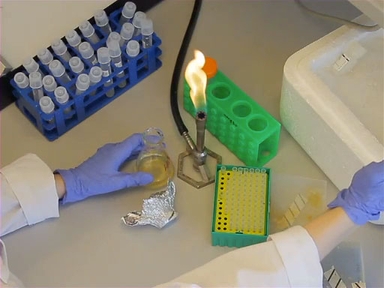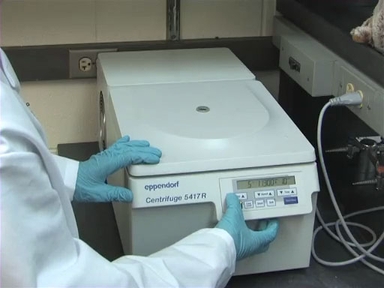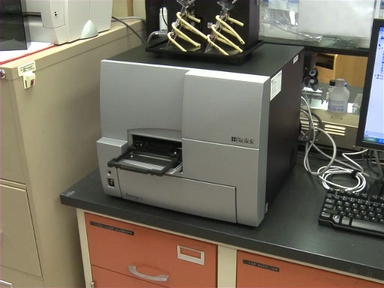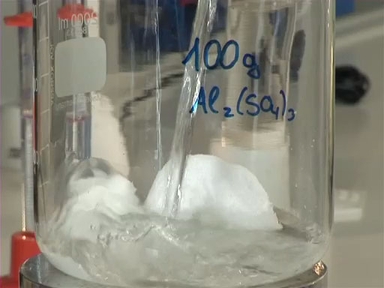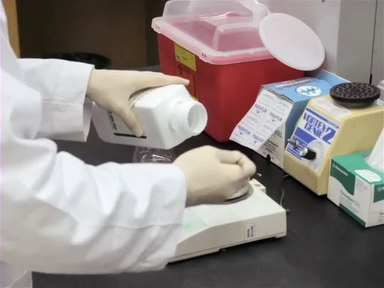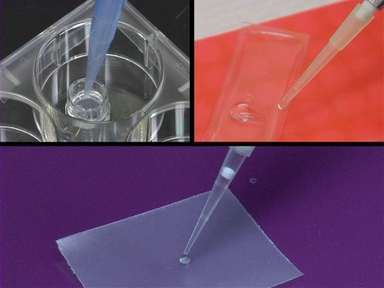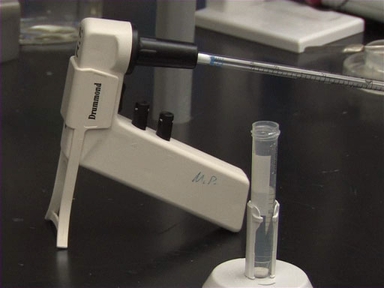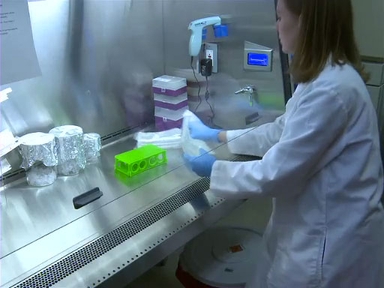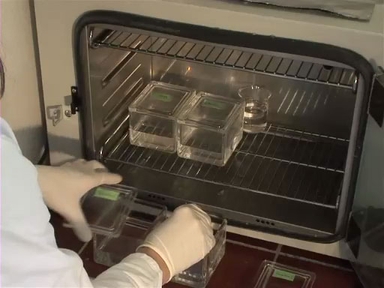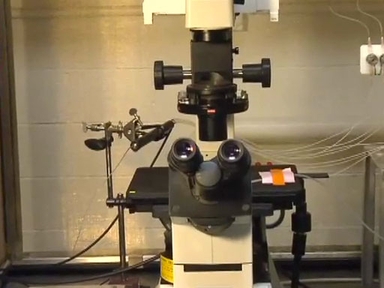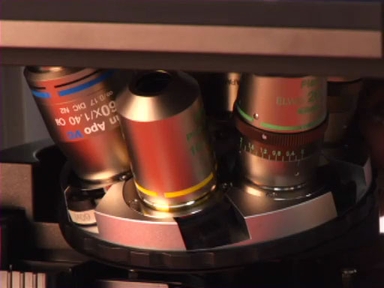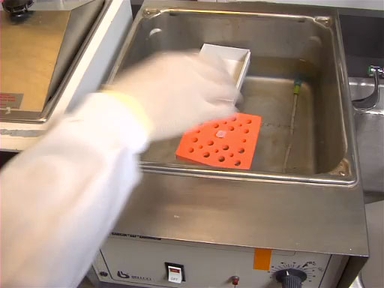A Bunsen burner is a laboratory instrument that can be used to provide a single, continuous flame by mixing gas with air in a controlled fashion. The ratio of gas to air that is mixed together can be manually adjusted, allowing the user to control the intensity, temperature, and size of the flame. The flame can then be used to heat or sterilize laboratory reagents and equipment.
All Bunsen burners are made up of the same basic components. The barrel, or burner tube, is where the air and gas mix.
The collar, which is located at the bottom of the barrel , can be adjusted to control the air intake and the heat of the flame. The collar can be turned to allow for more air to enter the burner by revealing air vents or it can be rotated to occlude them.
The air vent openings in the collar draw in air by the Venturi Effect. That is, when the collar is opened, a reduction in air pressure within the burner tube occurs, pulling the air into the barrel.
The needle, or gas flow, valve is also located at the bottom of the barrel and screws into the base of the Bunsen burner. Like the collar, the needle valve can be turned counterclockwise or clockwise to control the flow of gas. Adjusting the needle valve allows the size of the flame to be controlled.
The barrel screws into a base, which keeps the Bunsen burner stable and remains cool to allow safe relocation of the instrument during or after use.
The gas inlet connects the Bunsen burner to the gas jet through a rubber gas intake tube. A spark lighter is commonly used for igniting the combustion of the gas and air.
To use a Bunsen burner, first make sure the collar is closed.
To ensure that you have the hottest, cleanest flame possible, make sure your rubber tubing is securely connected to the gas jet and to the gas inlet valve.
A heatproof mat can be placed under the Bunsen burner as an extra safety precaution to prevent damage to your bench top and to catch stray sparks.
Before lighting, place the Bunsen burner at least 12 inches in front of any overhead shelving or equipment and be mindful of loose hair or clothing, like your lab coat. Always keep safety equipment, like fire extinguishers and safety blankets, close at hand.
Then fully open the gas jet. Use a spark lighter to light the flame.
With the collar fully closed, the “safety flame” - a brighter, dirty, less intense flame – will appear. This flame is cooler and is generally used to indicate that the burner is “on”. The safety flame doesn’t burn as hot, because with the collar closed, there is minimal airflow through the burner tube, resulting in an incomplete combustion reaction.
Now begin turning the collar counterclockwise. As the collar opens, two distinctive flames appear. The blue outer flame is hotter than the safety flame and makes no noise. This flame can be difficult to see, so be careful when the burner is in this state.
The blue inner flame burns the hottest, particularly at the tip. In addition to being the hottest flame, it is also the cleanest and loudest flame, making a kind of “roaring” sound.
Once you have adjusted the collar to get the flame at the desired temperature, open or close the needle valve to increase the size of the flame or close it to make it smaller.
When your work is done, remember to turn off the gas.
Now that you know how to operate a Bunsen burner safely, let’s look at some of the many different applications for using the instrument.
Metal instruments sometimes need to be quickly sterilized before use or between steps of an experiment. Metal spatulas and inoculation loops, for example, are frequently sterilized between bacterial samples. Scissors and forceps can be dipped into alcohol and then flamed for rapid sterilization before surgery.
Glass instruments, such as serological pipettes, are also frequently briefly flame-sterilized before and between each use.
The Bunsen burner flame can be used to help maintain a sterile field around the openings of experimental containers. By briefly flaming the neck of the container a heat, or convection, current is created. The convection current lifts any particles in the air away from the container’s opening, preventing potential contamination by airborne particulates. Convection currents also serve to lift particulates in the air away from the experimental area, so the Bunsen Burner helps to keep the area around the experiment, sterile. For microscopy, glass slides are sometimes passed through a Bunsen burner flame to remove any dust particles before samples are mounted.
One interesting application of the Bunsen Burner is using heat to modify glass and metal tools. For example, this thin glass rod is being carefully heated and then bent while the glass is still hot to make a bacterial culture spreader.
Bunsen burner flames can also be used for pulling pipettes, bending pipettes, polishing glass capillary tubes , making glass dissection needles, and sealing a wire pick into a glass pipette.
You’ve just watched JoVE introduction to Bunsen Burners.
In this video we reviewed: what a bunsen burner is and how it works, how to adjust a Bunsen burner flame, some safety concerns, and some different applications of your Bunsen burner. Thanks for watching, and remember, only you can prevent laboratory fires!
